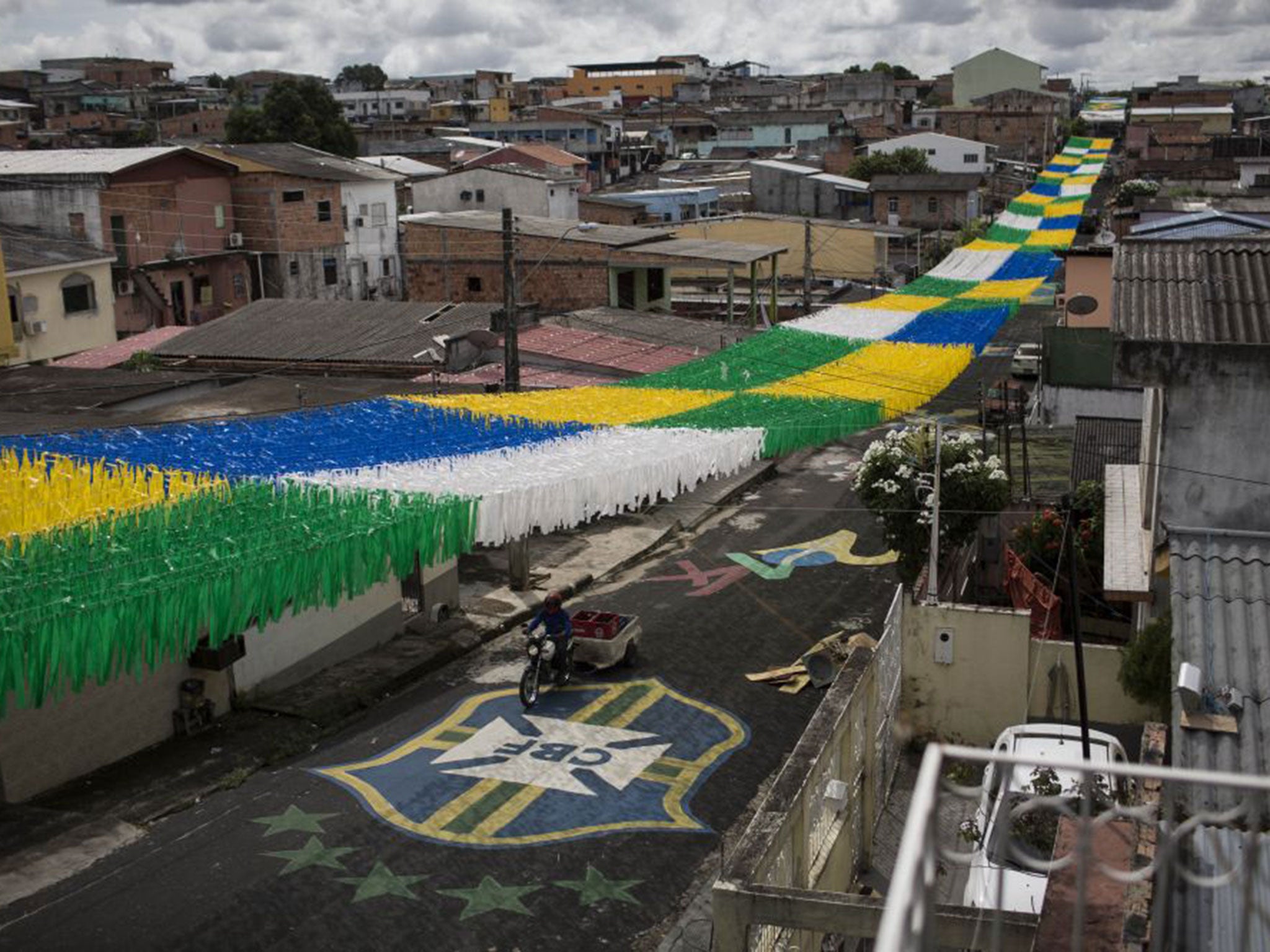Bellos on Brazil: Factories provide jobs in Manaus so there’s no need to plunder the forest
Acclaimed author Alex Bellos has a unique insight into Brazil. Here, in the first in a series of World Cup columns, he explains the fascinations of Manaus

When the England manager, Roy Hodgson, criticised Manaus for its heat and humidity, he was not the first prominent Englishman to denigrate Brazil’s rainforest capital. In 1849, the young naturalist Alfred Russel Wallace wrote that: “Morals in Barra [as Manaus was then known] are perhaps at the lowest ebb in any civilised community.”
If he were to return to Manaus today, Wallace would discover something equally exotic: a Victorian-style factory city of two million people isolated in the middle of the world’s largest rainforest. Hodgson’s team and the thousands of expected England fans arriving for the Italy game on Saturday night will be landing in one of the most fascinating places in Brazil.
On the face of it, Manaus is an absurd metropolis because it is a thousand miles from the sea, with no road connection to the rest of the country. It only exists as an industrial hub because the military government in the 1960s decided to “colonise” the Amazon and offered firms financial incentives to move there. The deals were so lucrative that Manaus’s industrial park soon became Brazil’s improbable production centre for household goods.
Manaus’s factories now employ about 100,000 directly and maybe half a million people indirectly. What’s particularly unusual about the city, however, is that women dominate the workforce. “A majority of the [factory] workers are women,” says Milton Hatoum, a novelist who grew up in Manaus and sets his stories there. This situation, he explains, is a reflection of the cultural traditions of the Amazon’s native peoples.
Most of the residents of Manaus are descended – at least in part – from indigenous Indians, and the social norms of rainforest communities remain present in the city. “The soul of Manaus is indigenous. Even with the industrialisation it has not lost that,” says Hatoum.
In the rainforest, men hunt and fish and the women work around the home – subsistence farming, cooking, basket-weaving. Factory managers quickly realised that the local women were better suited to factory work than the men. “The women are fast and skilful, able to concentrate,” says Hatoum. “They have a lot of patience for manual work. About 10 years ago a Japanese executive of a multinational came to visit the company factory in Manaus. He said the factory had the highest productivity of all the company’s factories.”
Yet the women in Manaus’s factories are paid less than workers in other parts of Brazil. “The regimes in the factories are brutal. It is exploitation. The scenario is not that different from the scenario depicted by the 19th-century British writers,” explains Hatoum – and he doesn’t mean Alfred Russel Wallace, he means Charles Dickens.
Even though the factories have caused the population to boom, the greatest irony about Manaus is that it is helping to save the rainforest. Because industry has provided jobs, there is no need to plunder the surrounding areas. Deforestation is tiny near Manaus compared to the massive destruction near other Amazon cities.
Another way the indigenous influence is felt in Manaus is in its sexual mores. “The women in Manaus never needed to burn their bras,” says Marcio Souza, a local writer. “A substantial part of Manaus do not behave according to the conventions of Christianity. They are much freer and more open – they live without the idea of sin. There is an ease with which women change male partners.”
But Souza adds that the arrival of workers from other parts of Brazil, where Catholicism is deep-rooted, has caused problems. “They often don’t accept the way the women are and Manaus has proportionately very high rates of violence against women and homosexuals.”
Since almost everyone has indigenous roots, the people of Manaus are more of a homogenous racial group than in other parts of Brazil. They also wear their clothes differently, and often barely at all – partly because of the heat and the humidity, and also because the Indians never wore clothes.
“Because the city is so isolated, there is a type of exacerbated sensuality and eroticism in the air,” says Hatoum. “I know of many couples who came to live in Manaus who separated after a few months.”
When you live in Manaus you end up with a different approach to life, he adds. “It’s a way of being, a state of contemplation. Sometimes life is very slow. It is not an irresponsibility, nor a negligence. It is something more profound. The [people] don’t care about chronological time.”
Hodgson will be hoping that his players don’t embrace all the local habits.
Alex Bellos is the author of ‘Futebol: The Brazilian Way of Life’, which has been revised and updated for the World Cup
Subscribe to Independent Premium to bookmark this article
Want to bookmark your favourite articles and stories to read or reference later? Start your Independent Premium subscription today.

Join our commenting forum
Join thought-provoking conversations, follow other Independent readers and see their replies